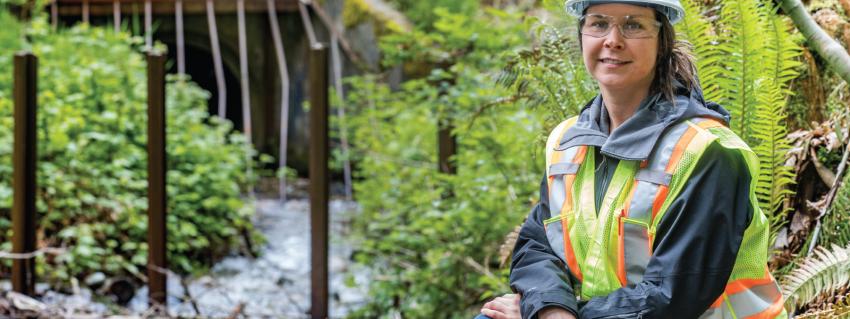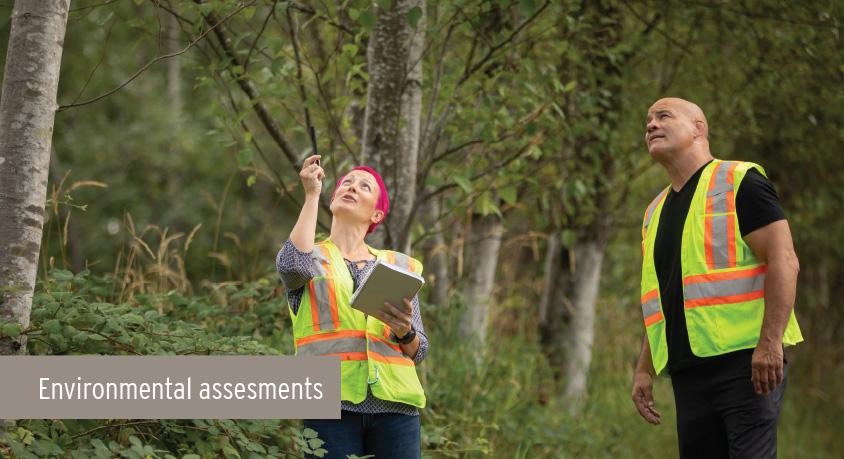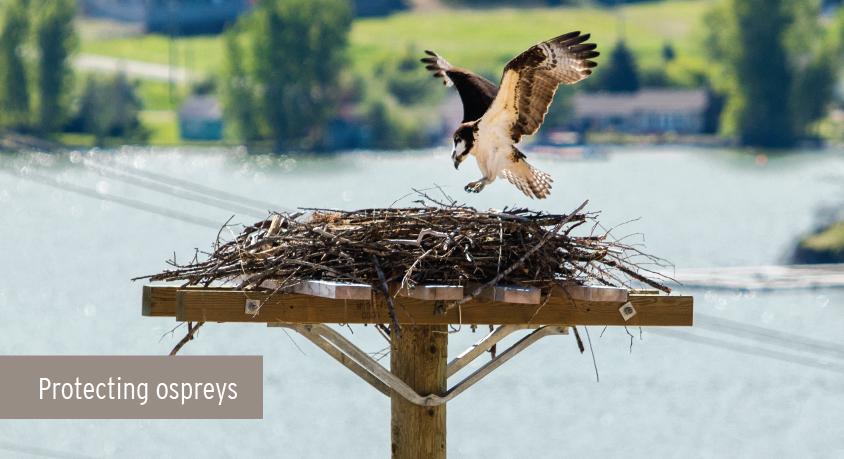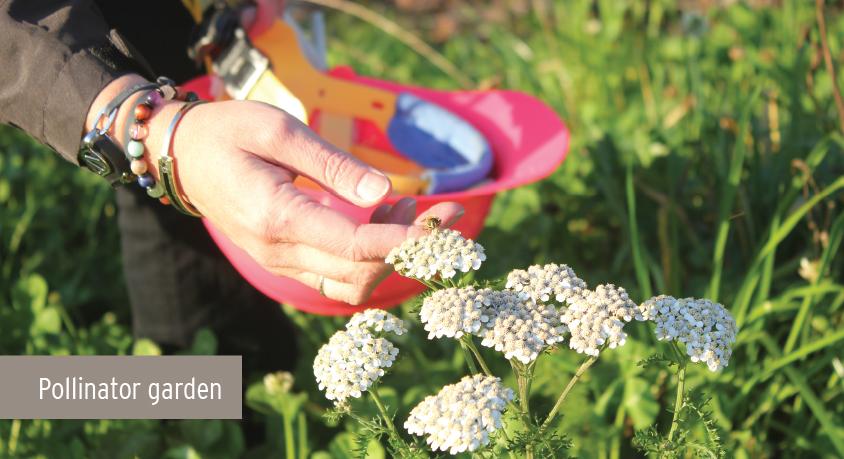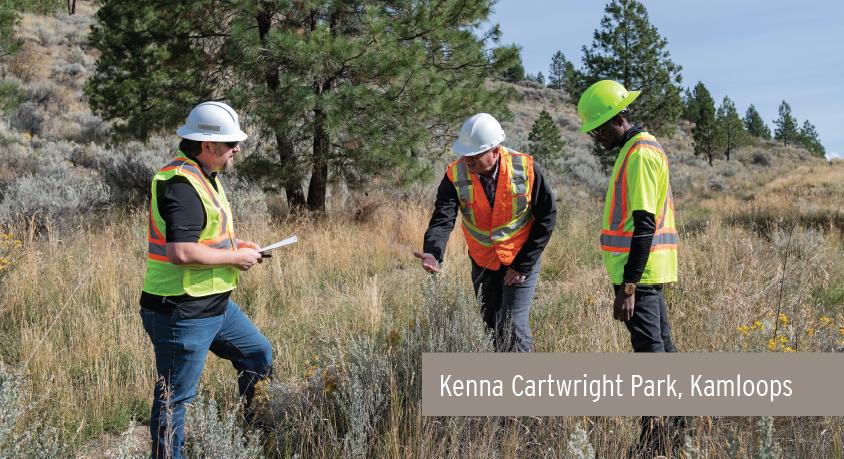Implementing plans to protect the environment
As part of project planning and before shovels hit the ground, we complete thorough assessments of potential project sites to identify environmentally sensitive areas that may require additional protection, seasons when construction can’t take place due to salmon spawning or bird nesting, and any areas that will require additional attention during restoration.
The information we collect during the assessments is used to develop an environmental management plan for the project as well as site-specific environmental protection plans that must be followed during construction.
Protecting waterways
During work on our FortisBC Gas Line Upgrades project from 2017 to 2019, the Silver Creek watershed in Burnaby was one of the sites that required a specific environmental protection plan. Silver Creek is a tributary of Burnaby Lake and is a sensitive fish and wildlife habitat. Protection measures included planning our work within the fisheries window to avoid salmon spawning season and establishing control measures to prevent sediment from flowing into streams and impacting fish, fish habitat and water quality. Environmental monitors were on site during, and after, construction activities to monitor water flow and make sure the sediment control measures that were implemented continued to do their job.
Protecting ospreys
Ospreys nest and fledge their young in BC from approximately mid-March to September. As part of the planning process for a major project, we take steps to locate and protect ospreys, as well as other wildlife, before work begins.
For the multi-year Inland Gas Upgrades (IGU) project, we establish construction buffer zones around osprey nests and in many cases delayed or rescheduled work to avoid disturbing ospreys and their chicks while they are in residence. Work resumes only when professional biologists determine the chicks are fully fledged and are not likely to return to the nest.
In certain circumstances, biologists may assess that it’s safe to continue working in the vicinity of an osprey nest with chicks still in residence. In those cases, a dedicated osprey monitor will be stationed close by to keep watch on the nest. If the birds become agitated, work stops immediately.
Restoration
Typically, site restoration includes measures such as removing surface gravels, and decompacting and recontouring the ground before replanting with trees, shrubs and grass. We also create microhabitats by adding logs, roots, etc. to promote faster regrowth.
Wherever possible during restoration we implement measures, and initiate projects, that will have a lasting local benefit for the community:
Invasive species removal
One of the ways we improved the areas where we worked on the Pattullo Gas Line Replacement project in Burnaby was to remove some invasive species like Himalayan blackberries and Scotch broom during vegetation clearing. When work is complete, we’ll replant those areas with native trees and shrubs, with a focus on a diverse selection of species that are good for wildlife. We’ll also develop a maintenance program to treat noxious species, such as Japanese knotweed and Canada thistle, within our project footprint that will continue once the project is complete.
Pollinator garden
Restoration for our FortisBC Gas Line Upgrades worksites near Burnaby Mountain included planting a pollinator garden that would provide an important source of food for wild bee species that live in the area.
Culvert extensions
We also made extensions to culverts—man-made structures that allow creeks to cross under roads and pathways—in the Silver Creek watershed that allowed us to make some improvements during restoration to benefit downstream fish and fish habitat, wildlife and trail users.
Invasive plant species study
Our partnership with Thompson Rivers University (TRU) in Kamloops on an invasive plant species study will help us with the restoration of our IGU worksites in Kenna Cartwright Park. The findings from the TRU-led study will not only help us restore our worksites with native plants that are resilient, and resistant to invasive species, the results will also help with the future development of diverse, sustainable and functional ecosystem habitat throughout the Kamloops region.
